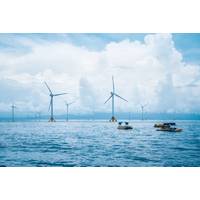
NOC Completes Scottish Roadmap for Offshore Wind Environmental Monitoring
climate change adding further complexity,” said Michela De Dominicis, an ocean modelling senior scientist at NOC.The Scottish Government is aiming to add at least 20 gigawatts (GW) of new renewable electricity capacity by 2030, potentially generating about 50% of Scotland’s current total energy demand.There is currently about 3 GW of offshore wind operational in Scottish waters. The Scottish Government’s ScotWind leasing round is targeting a further 28 GW across 20 projects, with another 5 GW targeted in the Innovation and Targeted Oil & Gas (INTOG) round
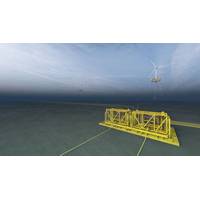
Aker Solutions to Design Substations for Mediterranean Floating Wind Project
power stations, via a system of submarine and land-based cable ducts.Med Wind will be developed in several stages and, once fully operational, will be able to produce about 9 TWh per year of clean energy, equal to the energy needs of 3.4 million households and equivalent to 3% of the national energy demand, an important step for the energy transition path undertaken by Italy.Finally, the project will help create jobs in Sicily over the six years planned for the construction of the plant and for maintenance activities over the following 25 years.“Aker Solutions’ approach has all the
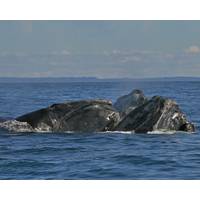
Threat to Whales Complicates US Research into Seaweed for Biofuel
.Kelp supporters also note that corn, unlike seaweed, takes up increasingly scarce land and freshwater, while also needing agrochemicals that then pollute waterways.The DOE has spent more than $55 million since 2017 on 21 projects exploring whether seaweed production can be scaled to meet some of U.S. energy demand.The department says the country has enough coastline with the right conditions to grow at least 500 million metric tons of seaweed per year - which could make up to 2.7 quadrillion BTUs of biofuel, roughly 10% of U.S. annual energy demand in transportation.For now, kelp can't beat corn'
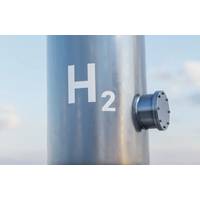
Hydrogen Pipelines: DNV Launches Phase 2 of H2Pipe Project
. Hence, low-carbon hydrogen is expected to play a significant role in decarbonizing many industries to mitigate climate change," DNV said.DNV’s 2022 Hydrogen Forecast to 2050 finds that to reach Paris Agreement targets, hydrogen would need to meet around 15% of the world’s energy demand by mid-century. Global spending on producing hydrogen for energy purposes from now until 2050 will be USD 6.8trn, with an additional USD 180bn spent on hydrogen pipelines and USD 530bn on building and operating ammonia terminals, DNV said
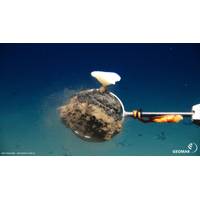
Subsea Mining Plans Pit Renewable Energy Demand Against Ocean Life
As companies race to expand renewable energy and the batteries to store it, finding sufficient amounts of rare earth metals to build the technology is no easy feat. That’s leading mining companies to take a closer look at a largely unexplored frontier – the deep ocean seabed.A wealth of these metals can be found in manganese nodules that look like cobblestones scattered across wide areas of deep ocean seabed. But the fragile ecosystems deep in the oceans are little understood, and the mining codes to sustainably mine these areas are in their infancy.A fierce debate is now playing out as a
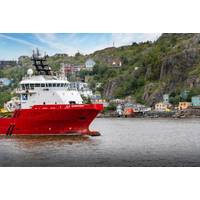
2023 Outlook: The Offshore Service Vessel Market
units than the market required at its all-time high demand!And while those asset classes were starting to see some significant momentum build in 2019 and Q1 2020, we saw the impact of COVID-19 bring demand right back to previous trough levels – almost overnight as restrictions that reduced energy demand were rolled out across the globe.As we are coming towards the end of 2022, it brings us considerable pleasure, and perhaps even some degree of relief, to report a market that is closer to a global recovery than at any point since the market turned sour.While there are admittedly some regional
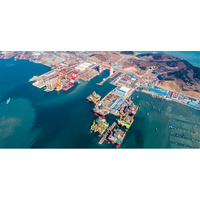
Eco Wave Power Signs MoU with CIMC for Deployment of Wave Energy Tech in China
of the market share around the world. With this kind of market spread capabilities, coupled with CIMC’s approach for innovation, we believe that the collaboration with CIMC Raffles may significantly reinforce Eco Wave Power’s penetration strategy to innovative markets, with high levels of energy demand, while also reinforcing CIMC’s portfolio of innovative solutions.”Eco Wave Power specializes in onshore/nearshore wave energy technology. It installs its systems in the onshore and nearshore environment and attaches them to marine structures, such as breakwaters. Read more on how

INTERVIEW: RDML John Okon, Commander, Naval Meteorology and Oceanography Command
communications to these systems is never an assured success. UMS systems need to be able to maneuver in that ocean environment, make adjustments according to the challenges that ocean environment presents and most importantly complete the objective or task with very little or often no communications. Energy demand remains a challenge.Looking at the full scope of responsibility under your command, can you distill what you count as the top three or four advantages/enablers that come with a larger, more capable and connected unmanned maritime system fleet?Fortunately, Naval Oceanography has fought through
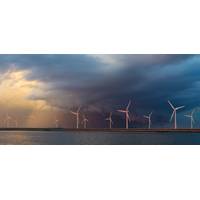
A New Role for Service Providers Amidst Energy Upheaval
In today’s energy industry, things are moving fast. The upheaval brought about by COVID-19 and exacerbated by the Russia-Saudi Arabia oil price war has been so profound that the International Energy Agency (IEA) has described the situation as “a once in a century event for energy demand”. This is supported by current IEA predictions which suggest a 6% drop in global energy demand in 2020 – seven times worse than the plunge in demand that followed the 2008 recession.Amid what the IEA has dubbed a “dismal” year for fossil fuels, the one bright spot is the performance


 February 2025
February 2025





